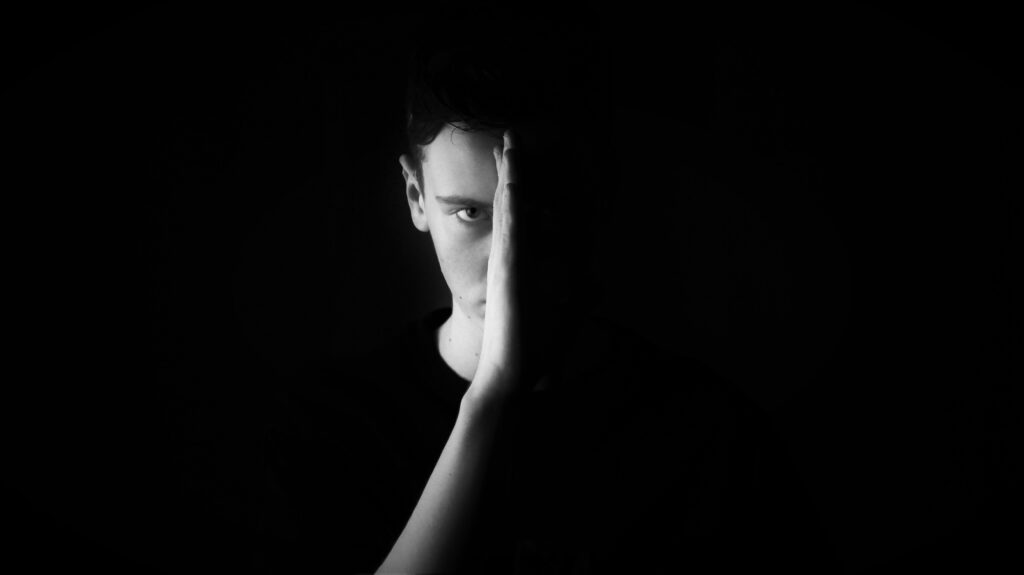The Wounded Divine Masculine: Let's Cut the Bullshit and Get to Healing
What It Is, How To Heal It And The Benefits Of Healing It
Let’s talk about the elephant in the room – the wounded divine masculine. Yeah, you heard it right. Men have been in the hot seat for centuries, and it’s high time we address this shit. Politics, entertainment, sports – you name it, men have been accused left, right, and center. But can we fix this? Can we bring back the sacred masculine from the brink? Or is it a lost cause? Buckle up, because we’re diving deep into this.

The Wounded Masculine: What the Hell is It?
We often yap about the wounded divine feminine, but what about the masculine? It’s like the neglected middle child, just as messed up but never getting the spotlight. So, what does this wounded masculine look like?
Think of it like this: You know that guy at work, the one who always has to be in control, who thinks there can only be one winner (him, of course), and everyone else is just a loser? That’s a classic case of the wounded masculine. It’s an us-versus-them mentality that turns people into obstacles rather than fellow humans.
And let’s not forget the pressure to be Mr. Perfect. Men are expected to be the rock, never show weakness, and God forbid they shed a tear. All this crap is rooted in fear – fear of failure, of not being good enough, of vulnerability.
How This Shit Shows Up in Our Lives
Let’s take John, a high-flying executive. He’s been told to be ruthless, to put work first, and to sacrifice everything else for his career. He’s praised for his “killer instinct” and take-charge attitude. But this attitude spills over into his personal life, and he starts seeing his friends and family as competition. He’s always on the defensive, always ready for a fight. He feels like he can’t let his guard down, even with the people he loves. This mindset creates more wounds and feeds the already wounded masculine.
But it’s not just John. This shit shows up in all sorts of ways and in all sorts of people. It’s the dad who can’t express love to his kids because he’s afraid it’ll make him look weak. It’s the husband who can’t communicate his feelings to his wife because he’s been taught that men should keep their emotions to themselves. It’s the friend who can’t ask for help when he’s struggling because he thinks he needs to solve his problems on his own.
And it’s not just in our personal lives. It’s in our workplaces, where men are encouraged to be aggressive and dominant, often at the expense of their female colleagues. It’s in our schools, where boys are told to “man up” when they show any sign of vulnerability. It’s in our media, where men are often portrayed as either emotionless heroes or violent villains.
The wounded masculine is everywhere, and it’s causing a whole lot of damage. It’s leading to stress, burnout, and relationship issues. It’s contributing to sexism, homophobia, and violence. And it’s preventing men from living authentic, fulfilling lives.
But here’s the good news: we can heal the wounded masculine. It’s not easy, and it’s not quick, but it’s possible. And the first step is recognizing the problem. Once we can see the wounded masculine for what it is, we can start to challenge it, question it, and ultimately, change it.
Healing the Wounded Masculine: Let’s Get to Work
Healing this mess starts with acknowledging it. We need to have honest, no-bullshit conversations about what it means to be a man today. We need to talk about our fears, our struggles, and our emotional pain without feeling like we’re less of a man for it.
Next, we need to change how we interact with other men. Instead of seeing each other as competition, we need to start seeing each other as allies. We’re all in this shit together, after all.
Step 1: Acknowledge Your Feelings
Find a quiet, comfortable space where you won’t be disturbed. Sit down, close your eyes, and take a few deep breaths. Allow yourself to feel whatever emotions are coming up. Don’t judge or try to change them, just let them be.
Step 2: Identify Your Wounds
Think about the behaviors and patterns that might indicate a wounded divine masculine within you. Are you overly competitive? Do you have a need to control everything? Do you avoid showing vulnerability at all costs? Write these down in a journal.
Step 3: Reflect on Their Origins
Try to identify where these behaviors and patterns come from. Did they start in childhood? Can you link them to specific events or influences? Write down any insights you gain.
Step 4: Practice Self-Compassion
Look at yourself in the mirror and acknowledge your wounds. Say to yourself, “I see you. I see your pain. And it’s okay.” This is a crucial step in healing – acknowledging your pain without judgment.
Step 5: Visualize Your Divine Masculine
Close your eyes and visualize what your divine masculine looks like when he’s healed. What qualities does he have? How does he behave? How does he feel? Write these down in your journal.
Step 6: Affirm Your Healing
Look at yourself in the mirror again and affirm your healing. Say to yourself, “I am healing. I am embracing my divine masculine. I am whole.”
Step 7: Change Your Interactions
Next, we need to change how we interact with other men. Instead of seeing each other as competition, we need to start seeing each other as allies. We’re all in this shit together, after all.
Step 8: Embrace Emotional Expression
Finally, we must embrace emotional expression as a part of our masculinity. Society often tells us that “real men” don’t show emotions, but that’s a load of crap. Real strength lies in being able to acknowledge and express our feelings. It’s about being a manly man who isn’t afraid to show his emotions, who doesn’t equate vulnerability with weakness. It’s about understanding that our emotions are a part of us, and expressing them doesn’t make us any less of a man. In fact, it makes us more human.
Healing the wounded masculine isn’t about suppressing our masculinity or becoming less of a man. It’s about redefining what it means to be a man – a man who can be strong and sensitive, assertive and empathetic, confident and compassionate. It’s about creating a new narrative of masculinity, one where we can be true to ourselves and live a life that we don’t hate.
Remember, healing is a journey, not a destination. Repeat this exercise daily or as often as needed. The wound of the divine masculine involves our relationship with women and men, so healing it requires deep healing of our inner feminine. We must also heal our relationship with ourselves, as we are all masculine and feminine energy equally. When we heal ourselves, we open up the possibility for others to do the same.

Healing the Wounded Divine Masculine: A Personal Journey
Healing the wounded divine masculine is a deeply personal journey. It’s not about becoming less of a man or more “feminine”. It’s about becoming kinder to oneself, working through trauma, and freeing oneself from internal suffering. It’s about becoming a man who carries empathy and compassion for others. I’ve seen this transformation firsthand in my husband, a combat USMC veteran with PTSD.
Our Journey:
My husband’s journey of healing his wounded masculine over the last 14 years has been nothing short of extraordinary. He didn’t become a “huge pussy” or overly “feminine”. Instead, he became kinder to himself, working through a lifetime of trauma from childhood to war. He developed empathy and compassion for others, and a lot of his internal suffering was freed.
In his journey, we’ve used a mixture of traditional therapy & meds, which basically bought him time until we met and the real healing began. Going deep into the psyche through my intuitive guidance, we embarked on a transformative journey together.
We took a trip to Peru for an ayahuasca journey, a powerful spiritual experience that opened up new avenues of healing. We also used ecstasy, marijuana, and psychedelic mushrooms, all in connection with unconventional talk therapies and metaphysical healing. These experiences weren’t just about escaping reality or getting a temporary high. They were about confronting the wounds, understanding them, and ultimately, healing them.
The Transformation:
The transformation in my husband has been profound. He’s still the strong, resilient man he always was. But now, he’s also more in touch with his emotions. He’s more empathetic, compassionate, and at peace with himself. He’s a testament to the fact that healing the wounded masculine doesn’t mean losing your masculinity. It means redefining it in a healthier, more holistic way.
Healing the wounded divine masculine is a journey, not a destination. It’s a process of self-discovery, self-acceptance, and self-love. And while it’s not always easy, it’s always worth it. Because at the end of the day, we all deserve to live a life free from pain, full of love, and true to ourselves.

Use the “Unmask Your True Self” Workbook
The “Unmask Your True Self” workbook can be a powerful tool to supplement this exercise. It dives deep into areas that help you peel away layers and fully reveal your authentic self. The workbook, along with the Unmask Bundle, offers a richer, more comprehensive journey into self-discovery, supplemented with video training lessons, audio lessons, meditations, and bonus courses. This multi-modal learning approach makes you feel more connected and supported in your healing journey. Get started for just $7 or upgrade for $37

1 Comment on The Wounded Divine Masculine: Let’s Cut the Bullshit and Get to Healing
Comments are closed.